The world's 10 greatest places for birdwatching (plus a few options closer to home)
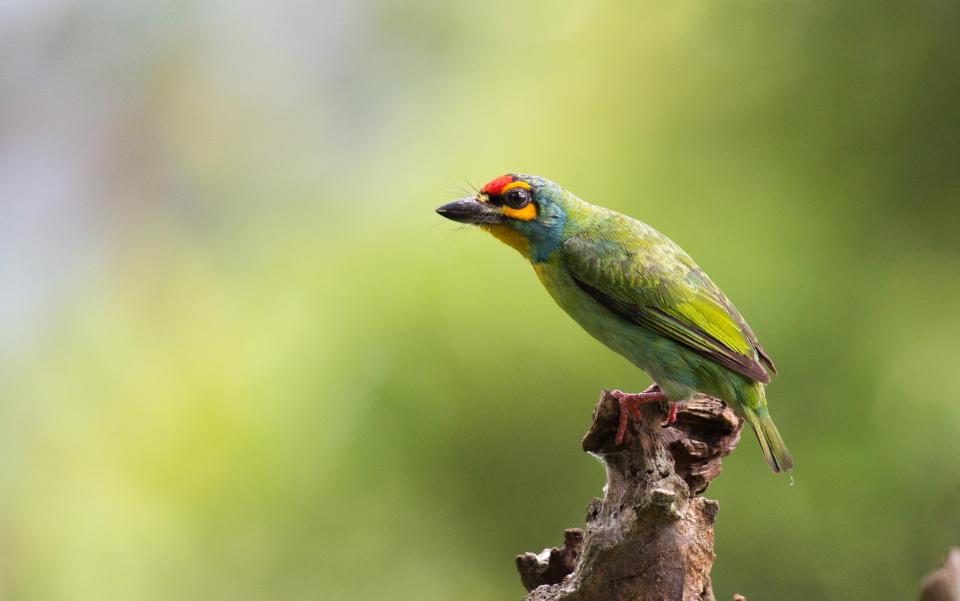
Inspired by the birdsong that defined our lockdown spring? Then grab your binoculars, pack your bags and head to some of the world’s great birdwatching hotspots, says Stephen Moss
One of the very few silver linings of lockdown has been the way the nation has connected with nature. As the sound of spring birdsong displaced the noise and bustle of city life, many people noticed the wildlife around them for the very first time, while in others the passion for all things wild and wonderful was reignited. We have woken to the dawn chorus, fed birds in our gardens, and enjoyed the wildlife we encountered on our daily exercise outings.
Now that the breeding season is over, though, the volume and intensity of birdsong has sharply declined, while some visitors to these isles, such as swifts and cuckoos, are already heading back to Africa.
It might still be summer, but autumn migration is well and truly under way: on our coasts, wading birds are stopping off to refuel on their journey south from the Arctic; swallows are gathering on telegraph wires, in preparation for their long voyage to South Africa.
So, if you’re beginning to miss your daily nature fix, why not take a leaf out of the birds’ book, and head abroad? The best way is by joining an organised bird tour, with expert leaders and a company with a track record in finding a good range of birds with the minimum of fuss.
The operators we recommend are already taking bookings for their 2021 trips and, despite travel restrictions, plenty of countries are still welcoming visitors.
1. Arctic birds under the midnight sun
Norway and Finland
The Land of the Midnight Sun – Northern Finland and Arctic Norway – is one of Europe’s premier birding destinations, with a number of species which can only be found north of the Arctic Circle. These include Siberian jay, gyrfalcon, Arctic redpoll, white-billed diver and king and Steller’s eider – many of which will be in full breeding plumage. You can also expect a host of skuas, owls and waders, which will also be sporting their breeding finery and performing their spectacular courtship displays. This small group tour, limited to just six participants, is led by Alan Davies and Ruth Miller, both former RSPB staff members.
Birdwatching Trips (01492 872407/07778 677141; birdwatchingtrips.co.uk) is offering a nine-day tour of Northern Finland and Arctic Norway from £2,250 per person, departing June 5 2021. The price includes flights, transport, stays at small hotels, and all meals.
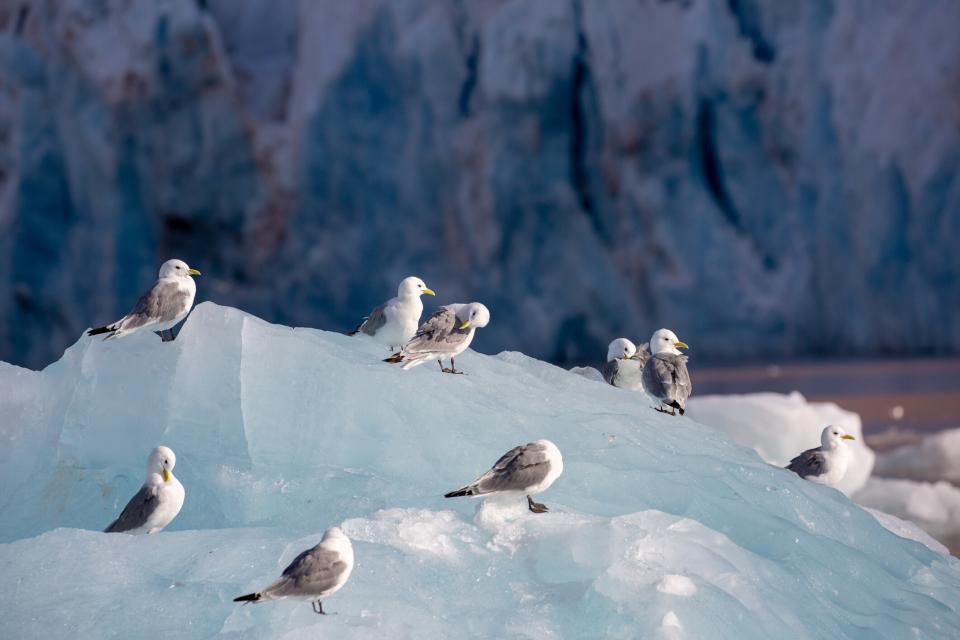
2. Raptors of the Pyrenees
France
Late spring is the ideal time to visit the Pyrenees, one of France’s most beautiful regions, because the bird-breeding season is at its peak. A week-long holiday with Naturetrek serves as a gentle introduction.
You’re likely to see a good number of raptors, including bearded and griffon vultures, red and black kites, and golden and short-toed eagles, together with other mountain specialities such as the Alpine chough, Alpine accentor and white-winged snowfinch. Lower down, the forests should produce black and middle-spotted woodpeckers, crested tits and crossbills. This tour also focuses on butterflies and the specialist wild flowers of the high tops.
Naturetrek (01962 733051; naturetrek.co.uk) is offering its eight-day Festival in the French Pyrenees tour from £1,695 per person, departing June 2 2021. The price includes flights from the UK, accommodation in a family-run hotel in Gedre, plus all meals.

3. Storks, eagles and woodpeckers
Poland
Marek Borkowski has been leading bird and mammal tours around the marshes, mountains and forests of Poland for more than 30 years. His winter tours give you a good chance of seeing up to 10 species of woodpecker, as well as several species of owl. These months are also best for mammals, with wolf, elk, lynx, beaver and European bison all possible. Spring is by far the best time for a wide range of birdlife, with vast numbers of waterbirds such as white stork, crane and white-tailed eagle, and the rare aquatic warbler and great snipe on the Biebrza Marshes near Marek’s home. You can also see summer visitors including warblers and flycatchers in the woods and reed beds, and woodpeckers in the ancient Bialowieza Forest, alongside the border with Belarus.
Wild Poland (0048 862 733 666; wildlife.pl) is offering a 16-day Premium Spring Trip from £3,150 per person, departing May 27 2021. The price includes transport, accommodation, plus all meals; flights cost extra.
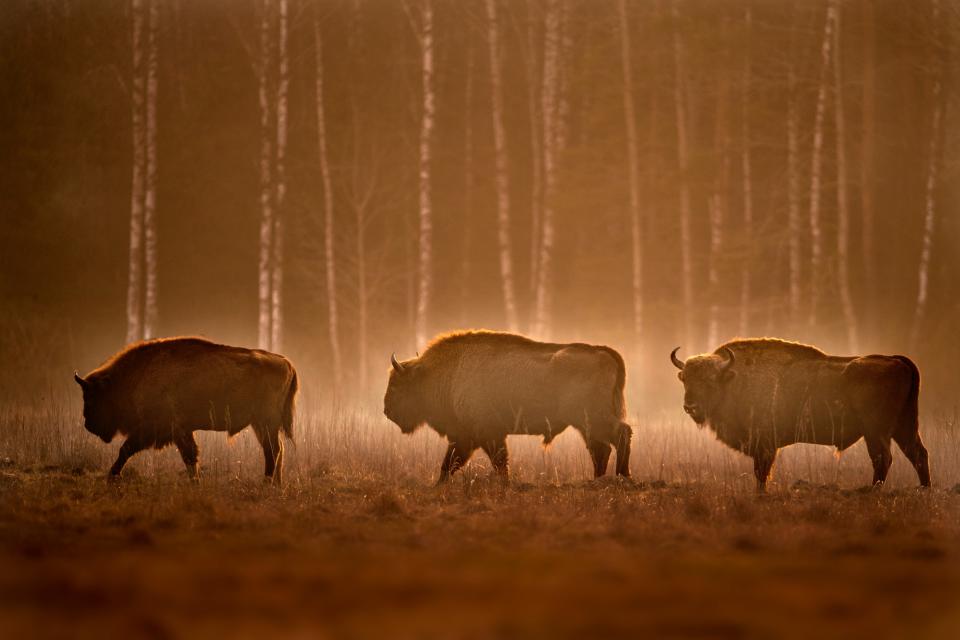
4. Hidden delights of Transylvania
Romania
Famous for the legend of Count Dracula, the Romanian region of Transylvania is also one of Europe’s last great unspoilt wildernesses. The forests are home to several species of woodpecker, including the largest member of the family in Europe, the crow-sized black woodpecker, as well as Ural and eagle owls, and a wide range of breeding songbirds, such as golden orioles. In the nearby mountains, you are likely to see golden eagles soaring above, and also one of the most striking and beautiful birds in the world, the wallcreeper. This Travelling Naturalist tour also offers the chance to encounter a range of mammals, notably Europe’s largest predator, the brown bear.
The Travelling Naturalist (01305 267994; naturalist.co.uk) offers an eight-day Birds and Bears in Transylvania tour for £2,075 per person, departing June 6 2021. The price includes flights, transport, accommodation, plus all meals.

5. Spring migration in the Med
Lesvos, Greece
The eastern Mediterranean is slap-bang on the crossroads of one of nature’s greatest spectacles, the annual spring migration, as tens of millions of birds head north from their winter-quarters in Africa to breed in Europe. Late April is the ideal time to visit the Greek island of Lesvos, close to the Turkish coast, with warblers, wheatears, wagtails, waders, shearwaters, flamingos, and many more. Lesvos is also home to two very localised and sought-after breeding species, Krüper’s nuthatch and the cinereous bunting, both of which should be seen. Based at a single hotel, within easy reach of all the top birding sites, this Sunbird tour is led by the internationally acclaimed bird artist Killian Mullarney, illustrator of the Collins Bird Guide.
Sunbird (01767 262522; sunbirdtours.co.uk) is offering a nine-day Spring Migration through the Aegean tour from £1,430 per person, departing April 22 2021. The price includes transport, accommodation at a comfortable hotel, plus all meals; flights from the UK cost extra.

6. Spectacular sightings in West Africa
The Gambia
The Gambia is the ideal easy introduction to Africa’s birdlife: with an array of colourful and exotic species, and a wide range of habitats, all packed into a tiny country just half the size of Wales. This Birdfinders tour, taking place after the wet season when the weather is comfortably warm, dry and sunny, is timed to coincide with the end of the breeding period, when birds such as weavers and bishops are still in their spectacular breeding plumage. You can also expect to see colourful rollers and kingfishers, hornbills and glossy starlings, and pelicans and storks, as well as more elusive species such as crakes, cisticolas and honeyguides. All just six hours flying time from the UK, with no jet lag!
Birdfinders (01258 839066/ 07768 691997; birdfinders.co.uk) is offering a 15-day Gambia tour from £2,495 per person, departing Nov 5 2021. The price includes transport, accommodation at hotels and tented camps, plus all meals.
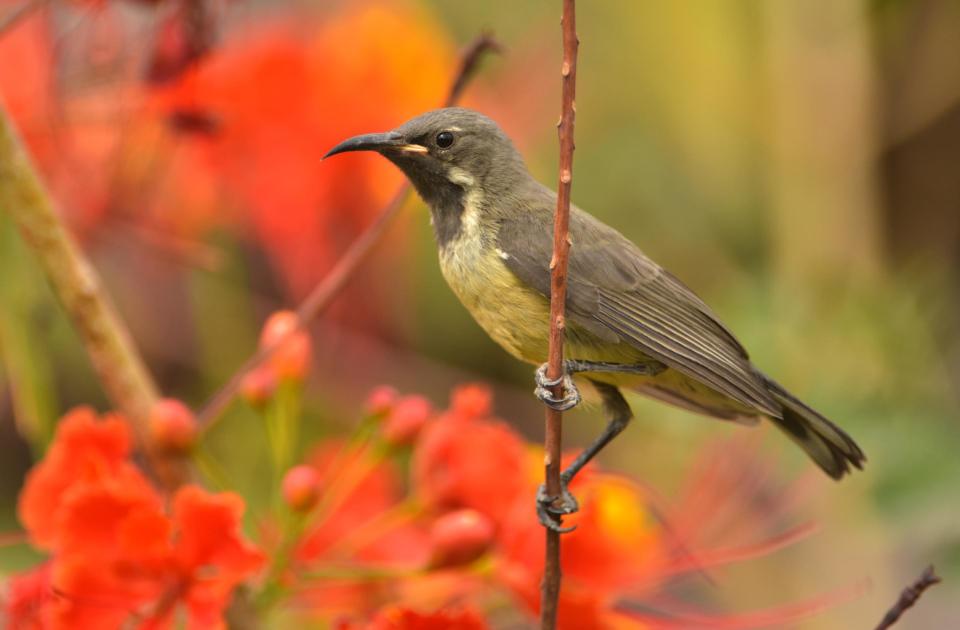
7. Birds and big game
Kenya and Tanzania
East Africa is arguably the world’s top destination if you want to see the widest possible range of birds and big game mammals. Kenya, and its neighbour Tanzania, boast many of the best-known sites, including the Ngorongoro Crater, Serengeti National Park, Mount Kenya and Lake Nakuru – home to the dazzling spectacle of millions of lesser flamingos. Expect to see as many as 500 species, including rollers and bee-eaters, sunbirds and lovebirds, weavers and waxbills, and the ostrich – the largest bird on the planet. You also have an excellent chance of encountering the “Big Five” – lion, leopard, elephant, buffalo and rhinoceros – against the backdrop of some of Africa’s most spectacular scenery. Based in South Africa, Rockjumper has unrivalled knowledge and expertise of this vast and bird-rich continent.
Rockjumper (0027 625 962 627; rockjumperbirding.com) is offering an 18-day Kenya and Tanzania safari tour from £6,853 per person, departing April 1 2021. The price includes transport, accommodation at safari lodges, and game drives, plus all meals.
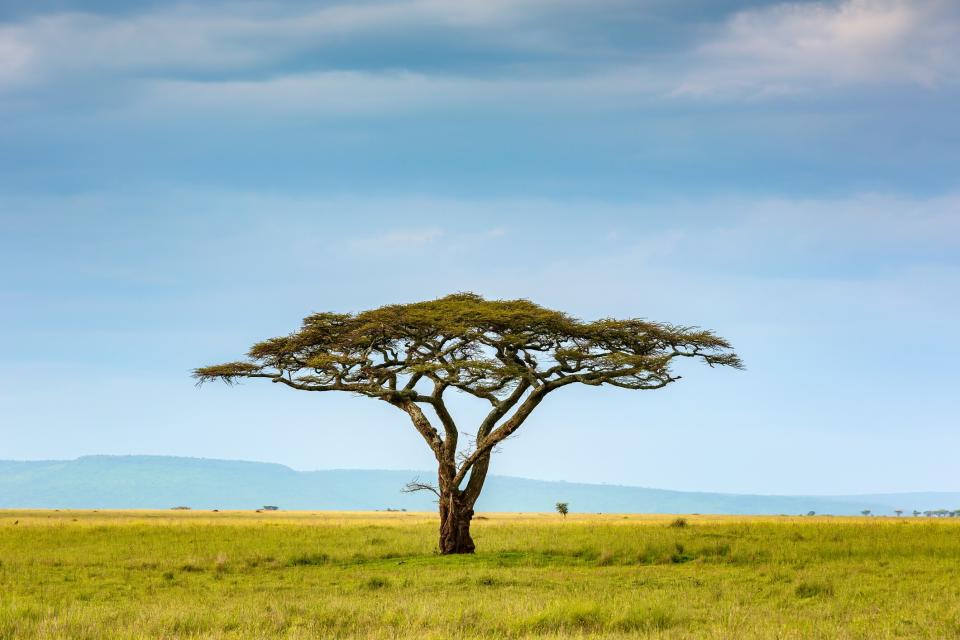
8. Jewel of the Indian Ocean
Sri Lanka
Sri Lanka is the ideal destination for a relaxed tropical birding holiday: with a range of beautiful landscapes, from marshes to mountains and jungles to coast, each harbouring an incredible variety of birds. The island is home to more than 30 endemic species – found here but nowhere else in the world – including the Sri Lankan junglefowl (looking just like a domestic cockerel) Sri Lanka blue magpie, and the recently discovered Serendib scops owl. Other highlights of this Limosa Holidays tour include brightly coloured kingfishers and sunbirds, stately storks and pelicans, and mammals including Asian elephants and langur monkeys. You also have a good chance of catching sight of a leopard at Yala National Park.
Limosa Holidays (01692 580623/4; limosaholidays.co.uk) is offering a 14-day Sri Lanka tour from £3,445 per person, departing Nov 13 2021. The price includes transport, accommodation at hotels and safari lodges, and game drives, plus all meals.
9. Hummingbirds and toucans
Costa Rica
Birdquest tours are aimed at the more serious end of the market, and pride themselves on delivering the most elusive and sought-after birds. Costa Rica may be just one fifth the size of England, yet this Central American nation is one of the top birding destinations on the planet, with almost 900 different species, many of which are only found in this region. On a two-week tour, you’ll have time to explore a range of habitats: from the Pacific coast, through the central highlands, to the Caribbean. Star species range from the resplendent quetzal of the cloud forest, to scarlet macaws, keel-billed toucans and up to 50 different kinds of hummingbird, many of which visit feeders at the lodges, giving incredible close-up views. Costa Rica is also one of the safest and friendliest places to travel, with good roads, comfortable accommodation and excellent food.
Birdquest (01254 826317; birdquest-tours.com) is offering a 15-day Best of Costa Rica tour from £3,930 per person, departing March 15 2021. The price includes transport, accommodation, plus all meals; flights from the UK are extra.

10. Seabirds and islands
Pacific Ocean
If a birding tour can be described as the trip of a lifetime, then this could be the one. Following in the footsteps of HMS Bounty’s voyage more than two centuries ago, this is a rare opportunity to visit some of the remotest places on earth, including Pitcairn and Henderson Islands, as well as better-known destinations such as Tahiti and French Polynesia. The overall number of species may be relatively low, but that is more than made up for by their rarity. This trip, run by the pioneering bird tour company Wildwings, aims to find birds that are only found in this vast and distant region. Highlights include one of the most sought-after waders on the planet, the Tuamotu sandpiper, as well as seabirds such as shearwaters, petrels, tropicbirds and frigatebirds, along with humpback whales. There will also be the opportunity to meet descendants of the original Bounty mutineers on Pitcairn.
Wildwings (0117 965 8333; wildwings.co.uk) is offering a 15-day Seabirds and Island Endemics of the Central Pacific tour from £8,995 per person, departing November 2021. The price includes accommodation on an expedition ship, plus all meals.
The birds that lit up lockdown
As we know from our enforced confinement, garden birds provide a free wildlife show right outside our windows that can rival Springwatch for excitement and surprises. So if you can’t or don’t wish to travel far this year, don’t despair. Here are a few of my favourites:
Robin
Britain’s best-loved bird is one of our commonest garden visitors, and often comes much closer than other species, following gardeners as they dig the soil to reveal earthworms and other tasty morsels. Both male and female have an orange-red breast, and are very territorial: unlike most other birds, robins sing throughout the autumn and winter.

Wren
People are often surprised to discover that the wren is Britain’s commonest bird, because its small size and elusive habits mean that it is rarely seen. Look out for a tiny, plump, chestnut-brown bird with short, whirring wings and, when it lands, a cocked tail.
Tits
Several species of tit are regular visitors to bird feeders. Look out for the larger, black-and-yellow great tit, the cheeky blue-and-yellow blue tit (below) and the shy coal tit, which is mainly black, brown and buff, with a white patch on the back of its neck. Long-tailed tits – which look like flying lollipops – are becoming more common in gardens.
Finches
Another group that often visits feeders, it includes the chaffinch, greenfinch and goldfinch – the latter one of our most striking and beautiful birds, with its crimson face and gold flashes on the wings.
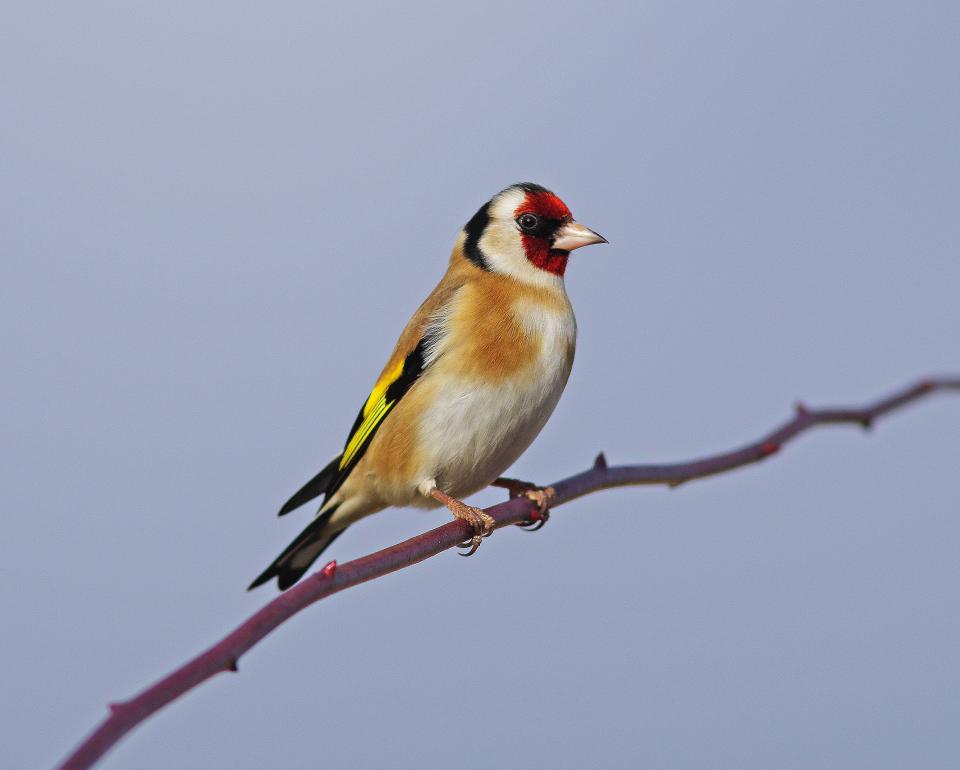
Thrushes
These larger birds include the familiar male blackbird – with its all-brown mate – and the song thrush, with its spotted breast. In autumn and winter, look out for redwings and fieldfares, two northern species that often visit gardens for food in hard weather.
Pied wagtail
Often overlooked, this slender black and white bird can be seen on pavements, lawns and terraces, where it finds tiny insects, or perching on roofs. When walking it wags its tail – hence the name!
Birding hotspots close to home
Britain is not lacking in world-class birding hotspots, with a variety of species on offer in all four seasons of the year. Many of these reserves offer short guided trips and special events for beginners.
Ham Wall, Somerset
These former peat diggings have been transformed into a wonderful wetland, overlooked by the landmark of Glastonbury Tor. Three species of egret – little, cattle and great white – are regular, while kingfishers and bitterns are elusive, but can be seen if you are patient. rspb.org.uk/reserves-and-events/reserves-a-z/ham-wall
Woodberry Wetlands, London
This London Wildlife Trust reserve, opened by Sir David Attenborough in 2016, is a haven of peace in the heart of London. Look out for lapwings, little egrets and a colony of house sparrows – which are rare elsewhere in the capital. wildlondon.org.uk
Minsmere, Suffolk
The RSPB’s flagship reserve on the Suffolk coast is home to a wide range of species. There are marsh harriers and bitterns in the reed beds, and terns, avocets and many other species on “The Scrape”, a shallow wetland with islands where the birds can nest. rspb.org.uk/reserves-and-events/reserves-a-z/minsmere
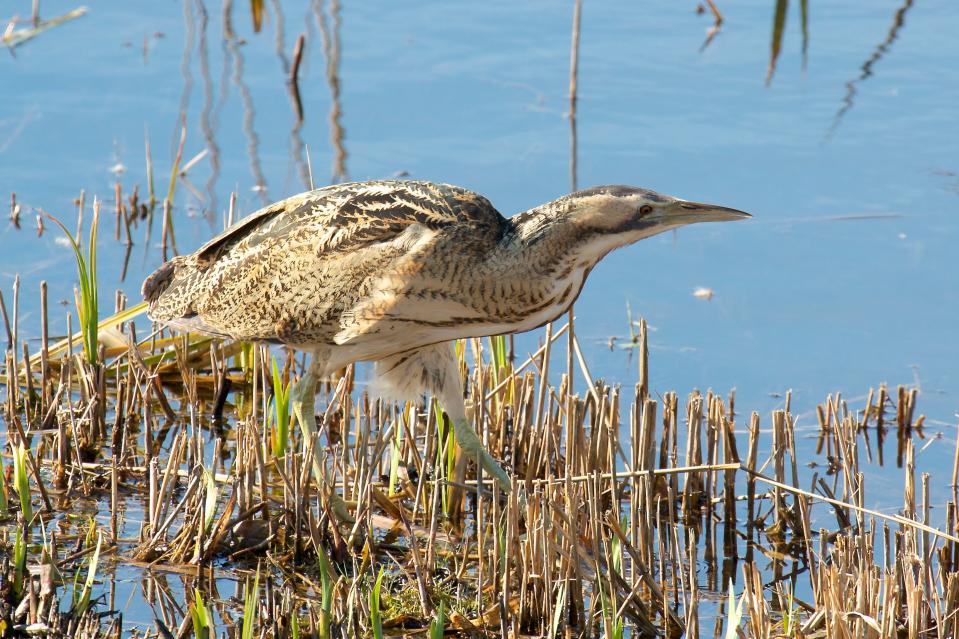
Loch Garten, Speyside
Home to the famous nesting ospreys, Loch Garten and the adjacent Abernethy Forest also hold many other Scottish specialities including crested tit, black grouse, and the rare and elusive capercaillie. rspb.org.uk/reserves-and-events/reserves-a-z/loch-garten
Bempton Cliffs, Yorkshire
The largest and most accessible mainland seabird colony in Britain supports gannets, guillemots, fulmars and everyone’s favourite seabird, the puffin, from April through to July. rspb.org.uk/reserves-and-events/reserves-a-z/bempton-cliffs
Llanelli Wetland Centre, Carmarthenshire
This Wildfowl and Wetlands Centre reserve is a great place for a family day out, with a collection of exotic waterfowl as well as a wetland area for little egrets and bitterns. In winter, there’s the chance of all five species of owl found in the UK. wwt.org.uk/wetland-centres/llanelli
Stephen Moss is a naturalist and author based in Somerset, where he leads tours for Somerset Birdwatching Holidays (somersetbirdwatchingholidays.com).

